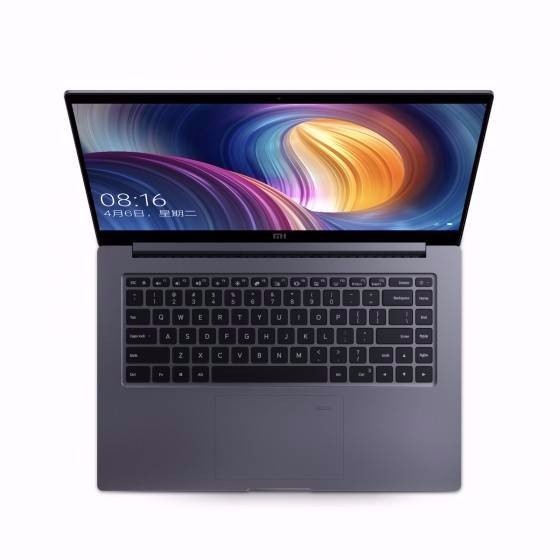新闻动态
新闻动态
- 揭秘QQ空间与《小时代4》的互联网+电影玩法‘8455线路检测中心’
- Netflix and Amazon Outspend CBS, HBO and Turner on TV Progra-8455线路检测中心
- 西门子和达索系统数字化工厂产品功能分析_8455线路检测中心
- 【8455线路检测中心】魏晨无缝隙接拍新剧再进组 粉丝喊话难解相思之苦
- 8455线路检测中心:仔猪什么价?8月20日全国仔猪价格行情汇总
- 2019年2月15日全国最新玉米价格行情预测|8455线路检测中心
:demo@eyoucms.com
:13900001111
:400-123-4567
:广东省广州市天河区某某科技园
媒体报道
Netflix and Amazon Outspend CBS, HBO and Turner on TV Progra-8455线路检测中心
:8455线路检测中心
:2025-07-05
:
本文摘要:TV programme producers adapt to the era of internet TV LONDON (18 October 2016) – Online platforms Netflix and Amazon have ramped up their investment in programming, spending $7.5 billion last year -- more than CBS, HBO, Turner and most countries, including South Korea and Australia. Between 2013 and 2015, Netflix and Amazon more than doubled their annual expenditure on programming. In 2013, Amazon spent $1.22 billion; that jumped to $2.67 billion in 2015. In the same timeframe, Netflix spending rose from $2.38 billion to $4.91 billion. The findings from World TV Production Report 2016, a forthcoming report by IHS Markit (Nasdaq: INFO), a world leader in critical information, analytics and solutions, examined how TV programme producers are adapting to the era of internet TV. “The levels of investment we are seeing from Netflix and Amazon are only topped by Disney ($11.84 billion) and NBC ($10.27 billion),” said Tim Westcott, senior principal analyst at IHS Technology. Other online platforms like Hulu in the United States and China’s Youku Toudu, iQifyi and Tencent have also increased their investment in original programming and acquisitions. “In what Netflix calls the era of internet TV, more and more consumers are watching content online, shaking the foundations of the traditional TV industry,” Westcott said. “However, it’s premature to declare that the era of linear TV is already over, and Netflix and Amazon have come hard on the heels of a boom in production of original drama and comedy by the likes of AMC and FX in the US." There were 148 new scripted shows aired by basic cable networks in the United States, up from 138 the year before and 96 in 2013, according to the IHS Technology report. In 2016 so far, there have been 113 scripted basic cable shows, compared to 78 on the networks, 31 on premium cable, and 57 online. To set these numbers in context: in 2012, there were three online scripted US TV shows, that number rose to 20 in 2014, 41 in 2015. Regional breakdown: US is clear leader, but China rises to number two in APAC “The primacy of the US in the worldwide programming market is clear,” Westcott said. “We estimate that in 2015, the US represented 33 percent of worldwide expenditure on TV programming, with $43 billion invested across free-to-air, pay TV and online.” “Amazon and Netflix, though they are US companies, are now commissioning for multiple territories, so we have treated them as global platforms.” After the US, the mature Western European region is the next most important, investing $38.6 billion, or just under one third of the total. The biggest markets in Western Europe were the UK with $10.7 billion, Germany ($7.3 billion), France ($6.6 billion) and Italy ($4.6 billion). “Notably, China is now the second largest market in the Asia Pacific region, with $8.4 billion invested last year,” Westcott said. Japan is the largest in the region with $9.8 billion, followed by South Korea ($2.6 billion), Australia and India -- both on $2.4 billion. Leading Latin American markets are Mexico ($1.5 billion) and Brazil ($1.4 million). Canada invested $3.4 billion last year. Russia and Turkey were both around the $900 million mark.
TV programme producers adapt to the era of internet TV LONDON (18 October 2016) – Online platforms Netflix and Amazon have ramped up their investment in programming, spending $7.5 billion last year -- more than CBS, HBO, Turner and most countries, including South Korea and Australia. Between 2013 and 2015, Netflix and Amazon more than doubled their annual expenditure on programming. In 2013, Amazon spent $1.22 billion; that jumped to $2.67 billion in 2015. In the same timeframe, Netflix spending rose from $2.38 billion to $4.91 billion. The findings from World TV Production Report 2016, a forthcoming report by IHS Markit (Nasdaq: INFO), a world leader in critical information, analytics and solutions, examined how TV programme producers are adapting to the era of internet TV. “The levels of investment we are seeing from Netflix and Amazon are only topped by Disney ($11.84 billion) and NBC ($10.27 billion),” said Tim Westcott, senior principal analyst at IHS Technology. Other online platforms like Hulu in the United States and China’s Youku Toudu, iQifyi and Tencent have also increased their investment in original programming and acquisitions. “In what Netflix calls the era of internet TV, more and more consumers are watching content online, shaking the foundations of the traditional TV industry,” Westcott said. “However, it’s premature to declare that the era of linear TV is already over, and Netflix and Amazon have come hard on the heels of a boom in production of original drama and comedy by the likes of AMC and FX in the US." There were 148 new scripted shows aired by basic cable networks in the United States, up from 138 the year before and 96 in 2013, according to the IHS Technology report. In 2016 so far, there have been 113 scripted basic cable shows, compared to 78 on the networks, 31 on premium cable, and 57 online. To set these numbers in context: in 2012, there were three online scripted US TV shows, that number rose to 20 in 2014, 41 in 2015. Regional breakdown: US is clear leader, but China rises to number two in APAC “The primacy of the US in the worldwide programming market is clear,” Westcott said. “We estimate that in 2015, the US represented 33 percent of worldwide expenditure on TV programming, with $43 billion invested across free-to-air, pay TV and online.” “Amazon and Netflix, though they are US companies, are now commissioning for multiple territories, so we have treated them as global platforms.” After the US, the mature Western European region is the next most important, investing $38.6 billion, or just under one third of the total. The biggest markets in Western Europe were the UK with $10.7 billion, Germany ($7.3 billion), France ($6.6 billion) and Italy ($4.6 billion). “Notably, China is now the second largest market in the Asia Pacific region, with $8.4 billion invested last year,” Westcott said. Japan is the largest in the region with $9.8 billion, followed by South Korea ($2.6 billion), Australia and India -- both on $2.4 billion. Leading Latin American markets are Mexico ($1.5 billion) and Brazil ($1.4 million). Canada invested $3.4 billion last year. Russia and Turkey were both around the $900 million mark.
本文关键词:8455线路检测中心
TV programme producers adapt to the era of internet TV LONDON (18 October 2016) – Online platforms Netflix and Amazon have ramped up their investment in programming, spending $7.5 billion last year -- more than CBS, HBO, Turner and most countries, including South Korea and Australia. Between 2013 and 2015, Netflix and Amazon more than doubled their annual expenditure on programming. In 2013, Amazon spent $1.22 billion; that jumped to $2.67 billion in 2015. In the same timeframe, Netflix spending rose from $2.38 billion to $4.91 billion. The findings from World TV Production Report 2016, a forthcoming report by IHS Markit (Nasdaq: INFO), a world leader in critical information, analytics and solutions, examined how TV programme producers are adapting to the era of internet TV. “The levels of investment we are seeing from Netflix and Amazon are only topped by Disney ($11.84 billion) and NBC ($10.27 billion),” said Tim Westcott, senior principal analyst at IHS Technology. Other online platforms like Hulu in the United States and China’s Youku Toudu, iQifyi and Tencent have also increased their investment in original programming and acquisitions. “In what Netflix calls the era of internet TV, more and more consumers are watching content online, shaking the foundations of the traditional TV industry,” Westcott said. “However, it’s premature to declare that the era of linear TV is already over, and Netflix and Amazon have come hard on the heels of a boom in production of original drama and comedy by the likes of AMC and FX in the US." There were 148 new scripted shows aired by basic cable networks in the United States, up from 138 the year before and 96 in 2013, according to the IHS Technology report. In 2016 so far, there have been 113 scripted basic cable shows, compared to 78 on the networks, 31 on premium cable, and 57 online. To set these numbers in context: in 2012, there were three online scripted US TV shows, that number rose to 20 in 2014, 41 in 2015. Regional breakdown: US is clear leader, but China rises to number two in APAC “The primacy of the US in the worldwide programming market is clear,” Westcott said. “We estimate that in 2015, the US represented 33 percent of worldwide expenditure on TV programming, with $43 billion invested across free-to-air, pay TV and online.” “Amazon and Netflix, though they are US companies, are now commissioning for multiple territories, so we have treated them as global platforms.” After the US, the mature Western European region is the next most important, investing $38.6 billion, or just under one third of the total. The biggest markets in Western Europe were the UK with $10.7 billion, Germany ($7.3 billion), France ($6.6 billion) and Italy ($4.6 billion). “Notably, China is now the second largest market in the Asia Pacific region, with $8.4 billion invested last year,” Westcott said. Japan is the largest in the region with $9.8 billion, followed by South Korea ($2.6 billion), Australia and India -- both on $2.4 billion. Leading Latin American markets are Mexico ($1.5 billion) and Brazil ($1.4 million). Canada invested $3.4 billion last year. Russia and Turkey were both around the $900 million mark.
本文关键词:8455线路检测中心
本文来源:8455线路检测中心-www.0000218.com
-
2018-05-18CMS是如何应运而生的?
-
2018-05-18网站建设,静态页面和动态页面如何选择
-
2018-05-18网站建设的五大核心要素
-
2018-05-17一文读懂互联网女皇和她的报告:互联网领域的投资圣经、选股指南
-
2018-05-17新手科普文!什么是用户界面和体验设计?
-
2018-05-17用户界面设计和体验设计的差别



